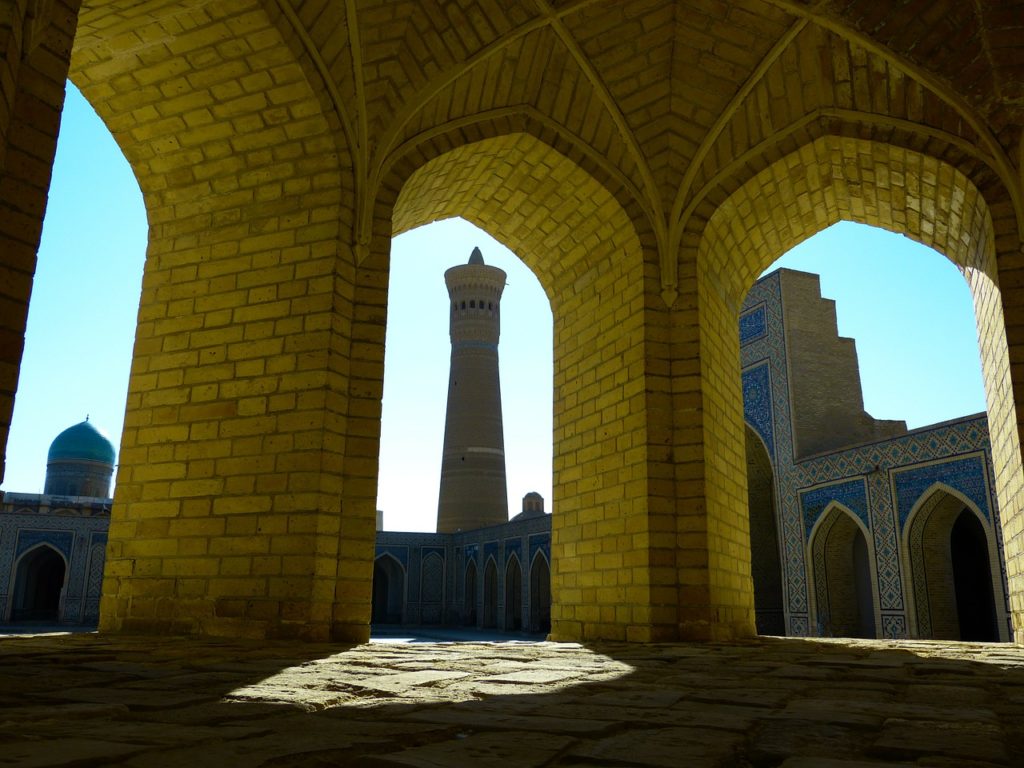Considered by many scholars to be the first-ever global superhighway, the legendary network of ancient trading routes known as the Silk Road played an instrumental role in shaping our modern world. Connecting the Far East to Mediterranean Europe and encompassing a diverse array of regions in between (including present-day Uzbekistan), the Silk Road not only facilitated the movement of people and goods, but it also allowed for an unprecedented exchange of knowledge, ideas, beliefs, customs, and traditions. Thousands of years later, in the 21st century, contemporary scholars and historians are looking back to these free and peaceful exchanges—which profoundly influenced and enriched cultures and societies along the Silk Road and beyond—for valuable inspiration and lessons about intercultural dialogue, and how this kind of communication can help to build and promote mutual understanding, tolerance, reconciliation, and peace.

Leading the movement to “revive” the idea of the historic Silk Road as a place of conversation and learning is UNESCO. In 1988, the organization launched its Silk Roads Project, a hugely ambitious undertaking that mobilized thousands of researchers, artists, journalists, and educators in more than 50 countries to dive into the unique history of this trading route, as well as to expand and enhance our current understanding of how cultural identity and heritage were forged by the dynamic interactions that occurred there. Today, the vast body of material that was accumulated during this project is available through UNESCO’s new online initiative, the Silk Road Online Platform, which extends the historic Silk Road networks in a digital space and makes vital Silk Road scholarship accessible to a global audience. Here are several areas that visitors can find on the Silk Road Online Platform.
Thematic Categories
In order to make it easier for visitors to explore various aspects of the Silk Road, much of the information on the online platform is organized into specific thematic categories. Visitors can browse these themes to learn more about a variety of subjects associated with the Silk Road.
Festivals—Along the length of the Silk Road, hundreds of festivals occur every year, ranging from religious ceremonies to artistic displays and sporting events. These symbolic occasions unite communities and embody the unique cultural identity of the people who reside along the Silk Road through displays of traditional clothing, food, music, performance, and crafts of all kinds.
Museums—A vital link between the innovations of today and the legacy of the past, museums are important centers of learning and discovery, places where people can appreciate the culture of others or forge new connections with their own culture. With a huge potential to contribute to their home communities’ social, cultural, and economic development, museums are an important way to pay tribute to the heritage of the Silk Road.
Traditional craftsmanship—Artisanal products created by master craftspeople are one of the most important and tangible legacies of the Silk Road. From silk and textiles to porcelain and ceramics, traditional handicrafts have been a vital part of commercial and cultural exchange along the Silk Road for millennia, and they have also served as an important foundation for cultural identity for people who live near the Silk Road. Through the Silk Road Online Platform, the creative industries of different regions are presented and promoted as a way of protecting traditional artisan methods and facilitating data collection on them.
Cities—Having grown up to serve as hubs for trade and exchange, the cities of the Silk Road became some of the most important building blocks in the development of historical (and contemporary) societies: places where not only material goods, but languages, ideas, skills, and customs were shared. The Silk Road Online Platform serves as an inventory of the most important cities along the various Silk Road routes, along with key facts about their history and role in the development of the Silk Road.
The Knowledge Bank
Compiled by UNESCO and its network of partners, the Knowledge Bank is a unique repository of expert information and up-to-date research on the Silk Road. Scientific papers, articles, reports, and studies by leading scholars, researchers, and academic and cultural institutions can be found on the Silk Road Online Platform: visitors can browse the information by route or country, as well as by keyword.
A List of Institutions
One of the top goals of the Silk Road Online Platform initiative has been to recreate, in a digital space, some of the opportunities for networking and connection that the historic Silk Road offered. Today, a large number of academic, artistic, and cultural institutions are dedicated to research and activities relating to the Silk Road. However, all too often their work is conducted independently from one another. Consequently, the outcome of their activities is often isolated and not easily accessible, either by other institutions or by the general public. The Silk Road Online Platform aims to address this by providing interactive profiles for these partner institutions, thus creating a space where knowledge about the Silk Road can be shared and promoted, and where like-minded individuals and organizations can come together for dialogue and exchange.

Sorry, comments are closed for this post.